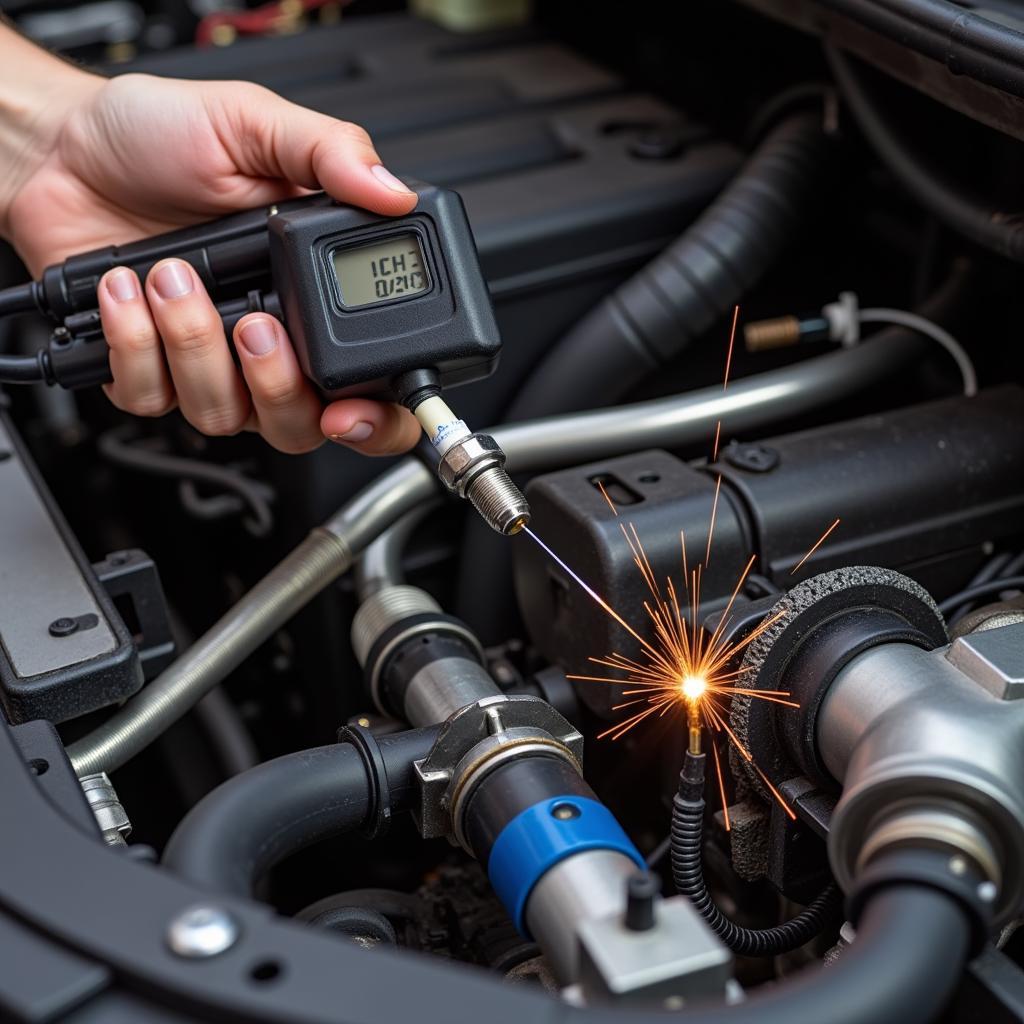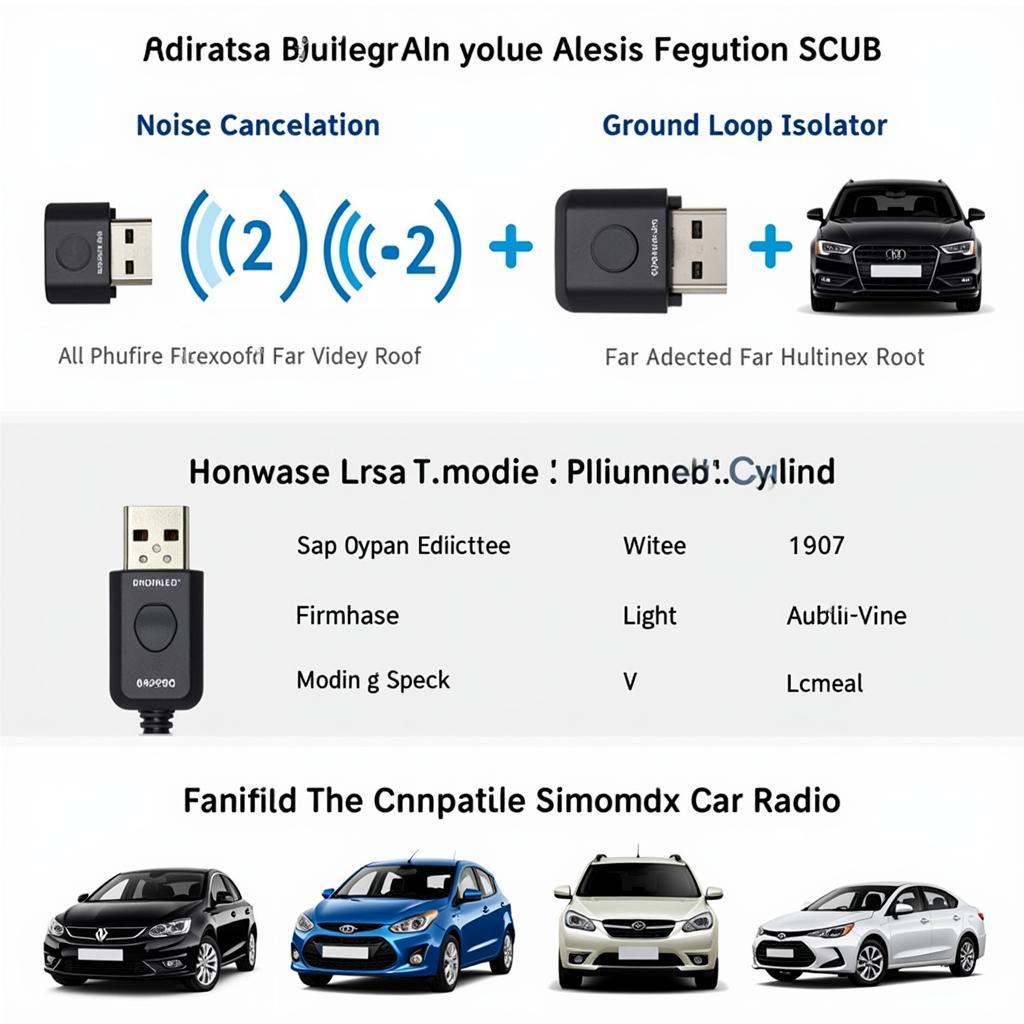Your car battery isn’t dead, the lights are on, but the engine refuses to turn over? This frustrating scenario, “car not dead but won’t start,” is more common than you think. This guide will walk you through the possible causes and solutions, empowering you to troubleshoot this problem effectively.
A car that won’t start despite a live battery can be caused by a variety of issues, ranging from a simple faulty ignition switch to more complex problems with the fuel system or the starter motor. Understanding the underlying mechanics of starting a car is crucial to pinpointing the root cause of the problem.
Understanding Why Your Car Won’t Start
The starting process involves several key components working in harmony: the battery, starter, ignition system, and fuel system. A failure in any of these can lead to a “car not dead but won’t start” situation.
The Battery’s Role: More Than Just Lights
While your lights might be on, a weak battery can still prevent the starter from engaging. The starter requires a significant amount of power to crank the engine. A battery with low voltage might be sufficient to power accessories but insufficient to turn the starter motor.
The Starter Motor: The Engine’s Cranking Arm
The starter motor is responsible for physically turning the engine over, initiating the combustion process. A faulty starter can prevent the engine from starting even with a healthy battery.
The Ignition System: The Spark of Life
The ignition system generates the spark needed to ignite the air-fuel mixture in the engine cylinders. Issues with the ignition switch, coils, or spark plugs can prevent the engine from firing.
The Fuel System: Delivering the Energy Source
The fuel system ensures that the right amount of fuel reaches the engine cylinders. A clogged fuel filter, malfunctioning fuel pump, or faulty fuel injectors can prevent fuel from reaching the engine, resulting in a no-start condition.
Troubleshooting Your Car’s Starting Problem
Now, let’s dive into the step-by-step process of diagnosing and fixing the issue.
- Check the Battery: Even though the lights are on, test the battery voltage with a multimeter. A reading below 12.6 volts indicates a weak battery.
- Inspect the Starter: Listen for a clicking sound when you turn the key. A clicking sound often indicates a faulty starter solenoid or a weak battery.
- Examine the Ignition System: Check the ignition switch for proper operation. If the switch is faulty, the car may not start.
- Verify the Fuel System: Listen for the fuel pump engaging when you turn the key. If you don’t hear it, there might be a problem with the fuel pump or its relay.
What if the Key Won’t Turn?
Sometimes, the key itself might be the problem. A worn-out key or a problem with the ignition cylinder can prevent the key from turning. Try a spare key or consult a locksmith.
“A common oversight is assuming the battery is fine just because the lights work. Always test the battery voltage with a multimeter for a definitive diagnosis.” – John Smith, Automotive Electrical Engineer.
Advanced Troubleshooting Techniques
If the basic checks don’t reveal the problem, you might need to delve deeper.
Checking Fuel Pressure:
Use a fuel pressure gauge to check if the fuel pump is delivering adequate pressure. Low fuel pressure can indicate a faulty pump or clogged fuel lines.
Testing Spark Plugs and Ignition Coils:
Use a spark plug tester to verify that the spark plugs are firing correctly. If the spark plugs are faulty or the ignition coils are not producing enough voltage, the engine will not start.
 Testing Car Spark Plugs and Ignition Coils
Testing Car Spark Plugs and Ignition Coils
“Modern cars rely heavily on electronics. A faulty sensor or a problem with the car’s computer can also prevent the engine from starting. In such cases, a diagnostic scan tool is essential.” – Maria Garcia, Automotive Diagnostic Specialist.
Conclusion
A “car not dead but won’t start” situation can be frustrating, but with a systematic approach, you can often identify and resolve the issue. This guide provides a starting point for troubleshooting the problem. If you’re still struggling, consulting a qualified mechanic is always recommended. how to reset anti theft on 07 tahoe
Remember, a little bit of knowledge and the right tools can go a long way in keeping your car on the road.


